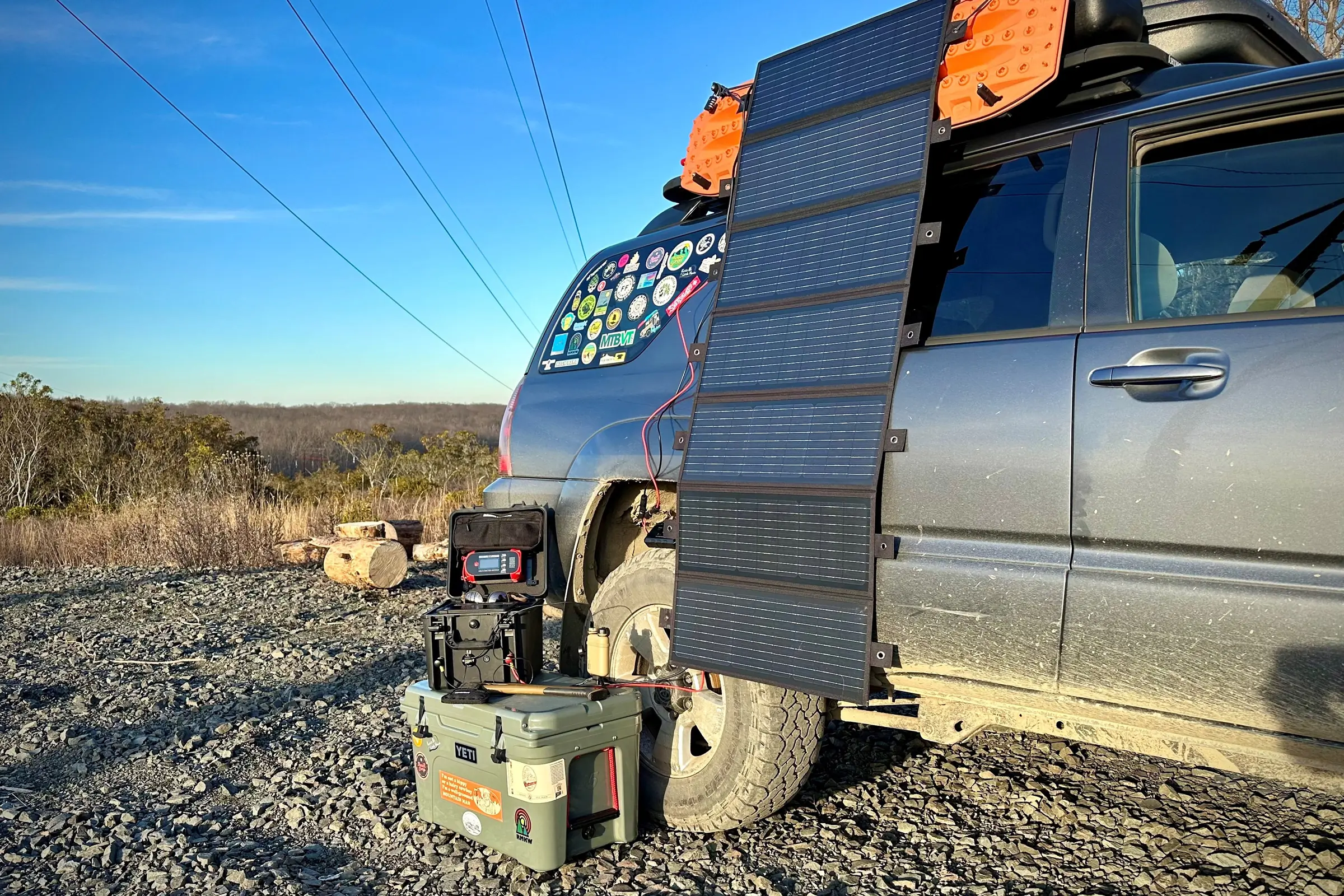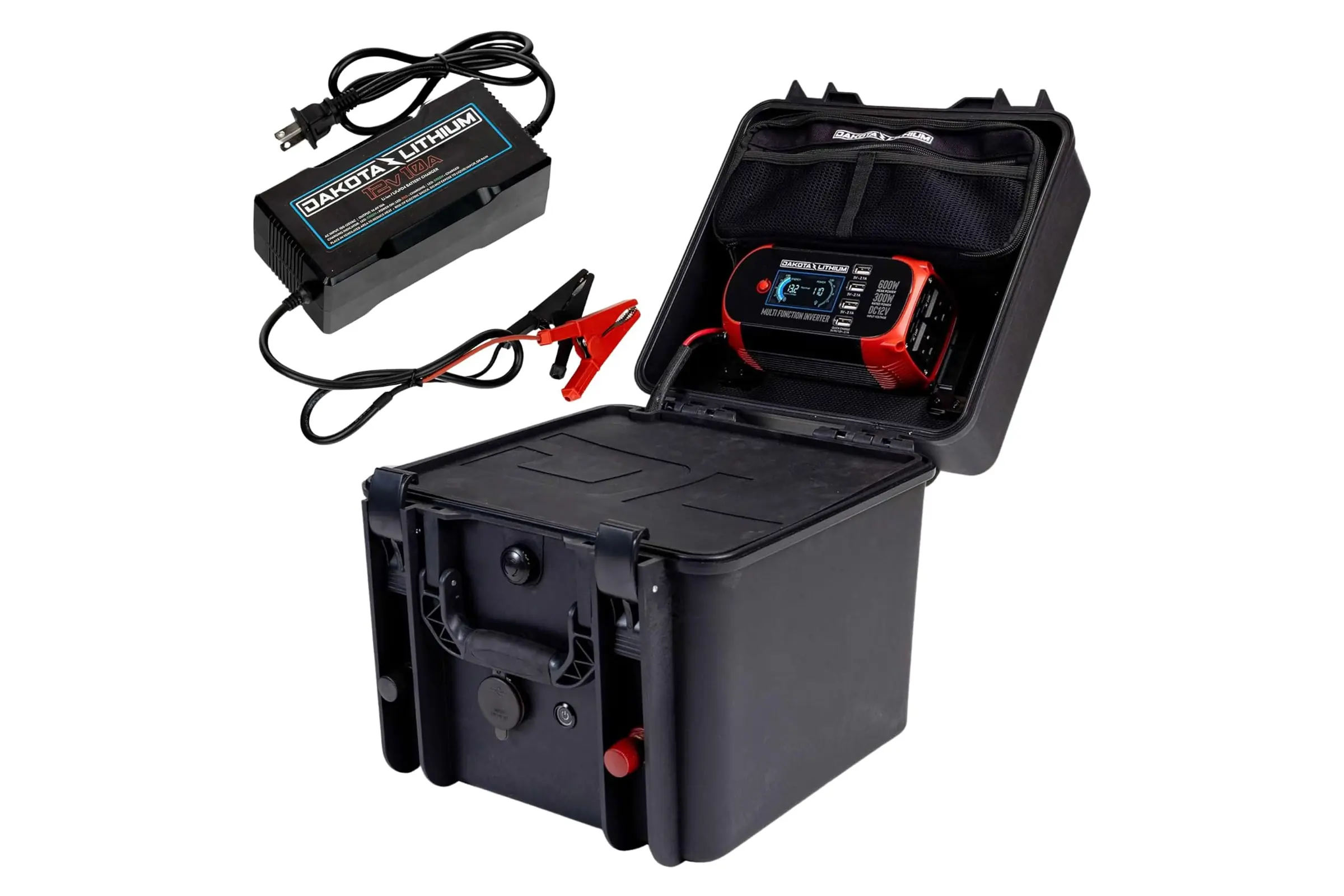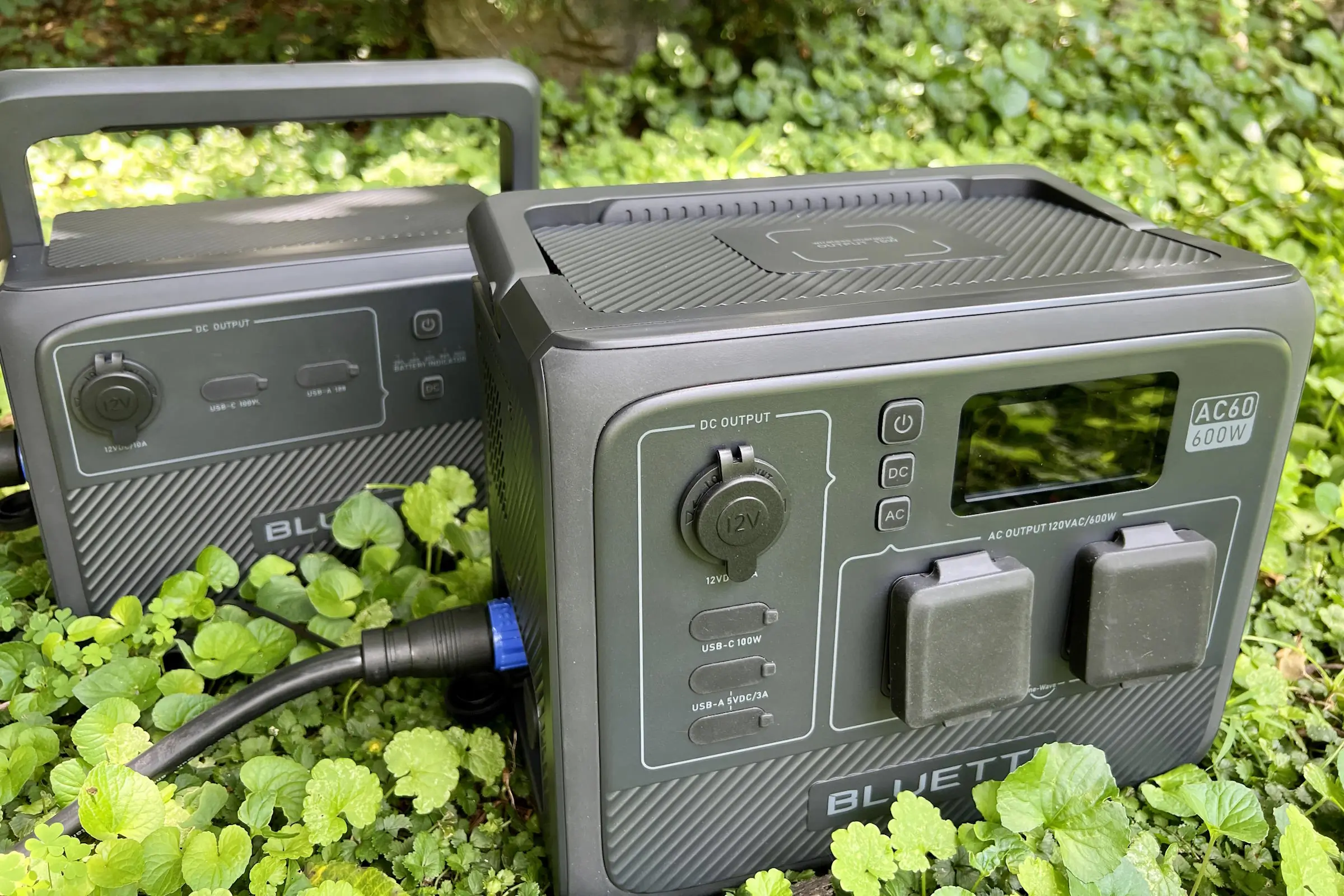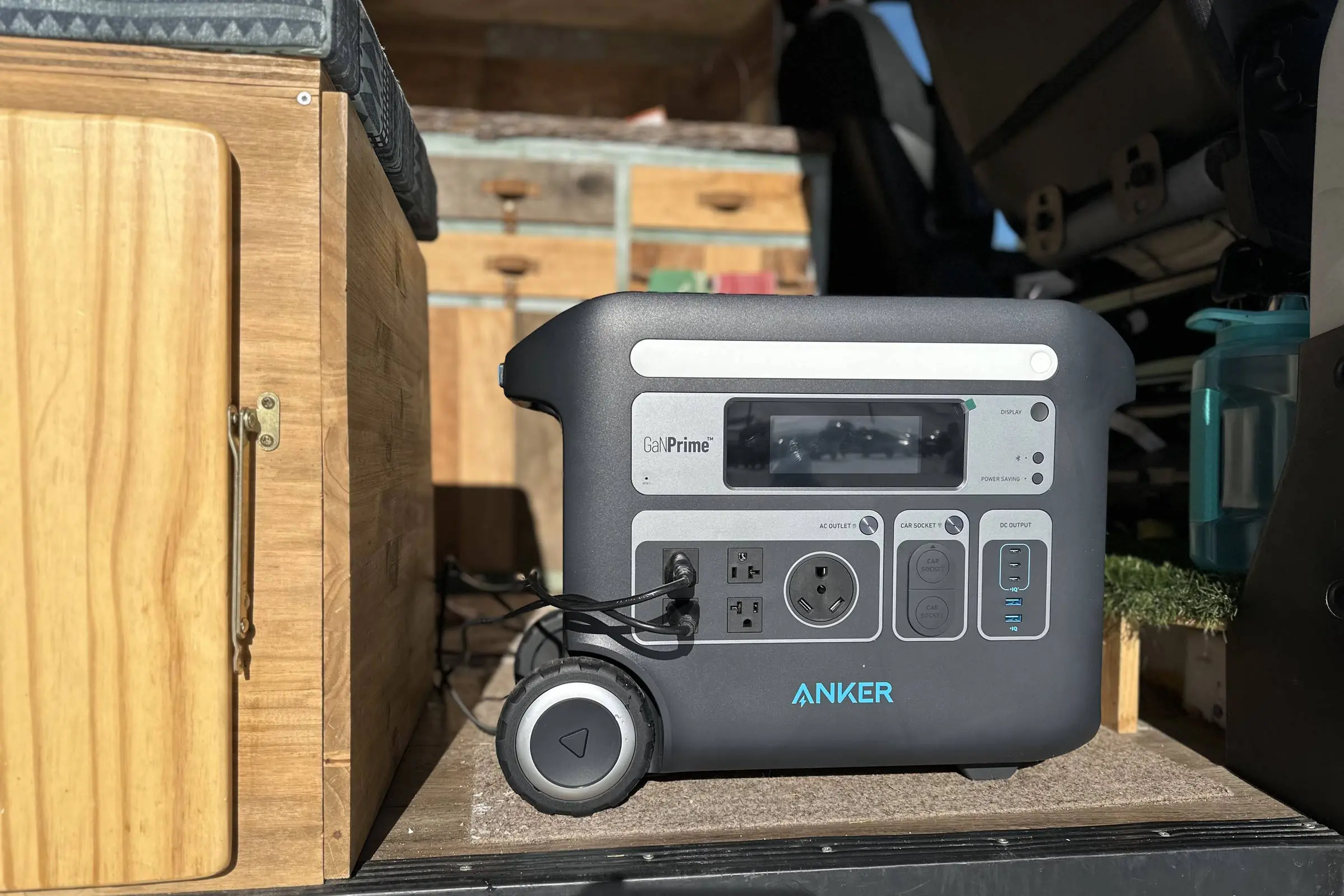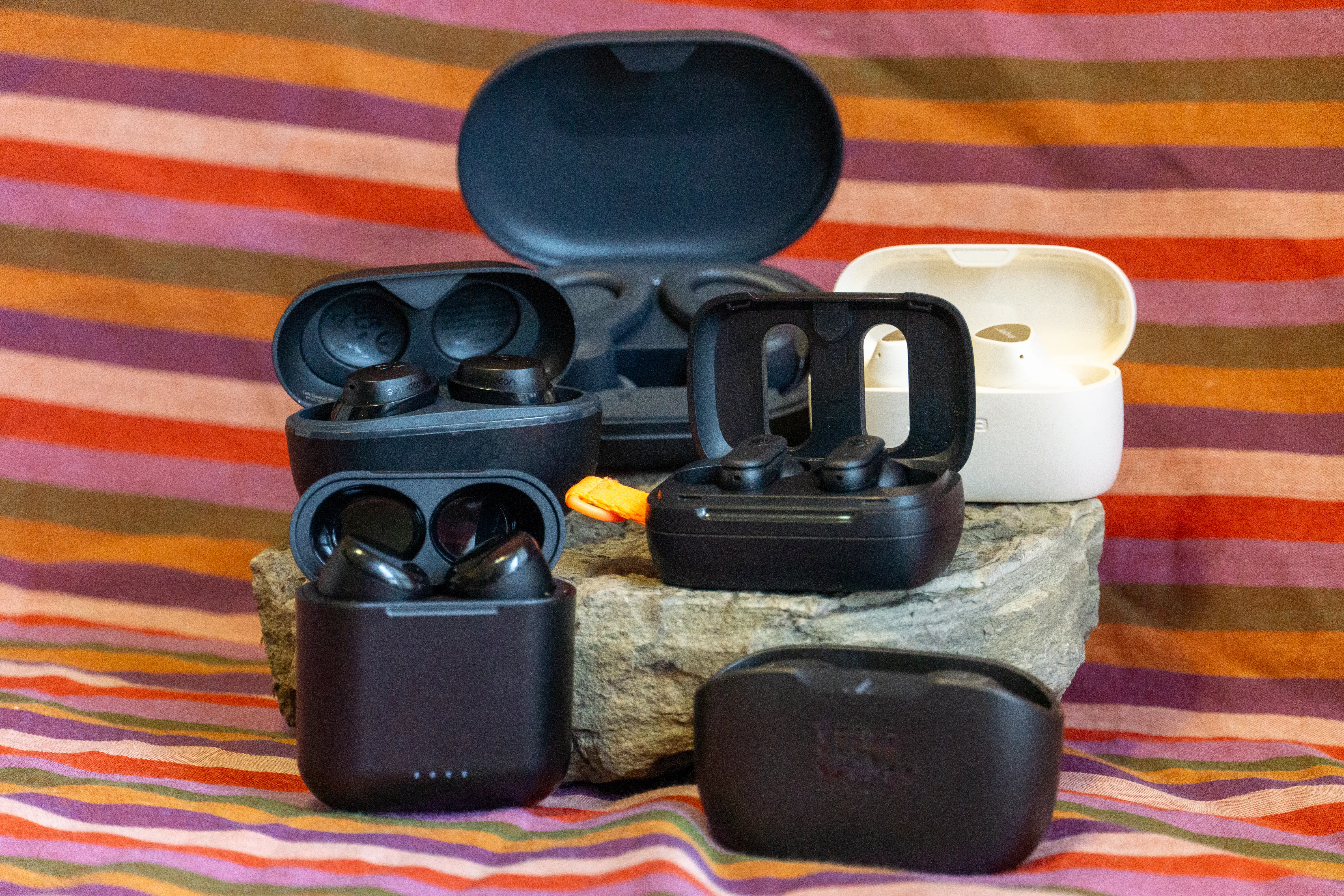For living off the grid, overlanding, family camping, RVing, and the wicked hip “van life” craze, portable power is a necessity. From being able to charge your cellphone, to lighting up your campsite at night, or blending margaritas, love it or hate it, portable power is no longer relegated to glamping. It’s now a full-spectrum living in the outdoors accessory.
That said, bringing power to the outdoors can be an investment. And just like every other consumable good out there today, there are different product levels to choose from. You can easily spend a little or a lot depending on what you expect that product to do. Keeping that in mind, quality and dependability should be your main focus. And, ease of use and adaptability should be up there in your decision-making process as well.
Dakota Lithium was cool enough to send me a Powerbox+ 60 as well as its 180W Folding Solar Panel. With the addition of a solar charge controller, there was no doubt in my mind that I had one of the most innovative, well-thought-out, and reliable portable power solutions on the planet. The one thing I was left to find out was if it was worth the $1,600 investment.
In short: Dakota Lithium’s Powerbox+ 60 is a field-maintainable, upgradable, portable power solution that is optimized for solar. Its products, as well as its advanced lithium battery technology, bridge the gap between some of the mainstream portable power solutions we’ve come to know and enjoy in the outdoor world, and the true-grit living of someone who’s decided to go completely off-the-grid full-time.
- Dimensions: 11.6” x 12.1” x 12.8”
- Weight: 27 lbs.
- Battery capacity: 720Wh
- Power output: 300W (Peak surge: 600W)
- Engine starting power: 1,000 CCA
- Battery life: 2,000 cycles at 80% capacity
- Charging ports: 110V AC (x2) / USB-A (x5) / USB-C (x1)
- Charging time: AC adapter 6 hrs. / 180W solar panel (optional) 7 hrs.
- Waterproof: Yes, IP67 (submersible)
- Price: $900
Pros
- The battery, in general
- Powerbox can be maintained in the field
- Upgradeable
- 11-year warranty on all products and components
- Build quality
Cons
- Solar charge controller not included
Dakota Lithium Powerbox+ 60 Powerstation Review
Seattle-based Dakota Lithium is a deep-cycle battery manufacturing company. It saw an opportunity to take its advancements in deep-cycle lithium battery development and adapt them to the outdoor world.
Boasting batteries with an 11-year warranty, Dakota promises to deliver twice the power of a traditional battery at half the weight. Its batteries will charge up to five times faster and last four times longer. Dakota also guarantees them to be safe and reliable.
Dakota developed the Powerbox Series for folks who can’t get enough of life in the outdoors. Available in a 10Ah, 60Ah, and 135Ah kit, each 12V Powerbox is IP67-rated and contains a variety of plug types — from 12V to USB to AC. That allows you to recharge or run a variety of electronics all at once.
But, what’s unique about these Powerboxes is Dakota’s inclusion of external battery terminals. You can jump a dead car battery or run a trolling motor. Additionally, these boxes support both wall charge and solar charge, making them adaptable to any environment.
Solar Charge Controller
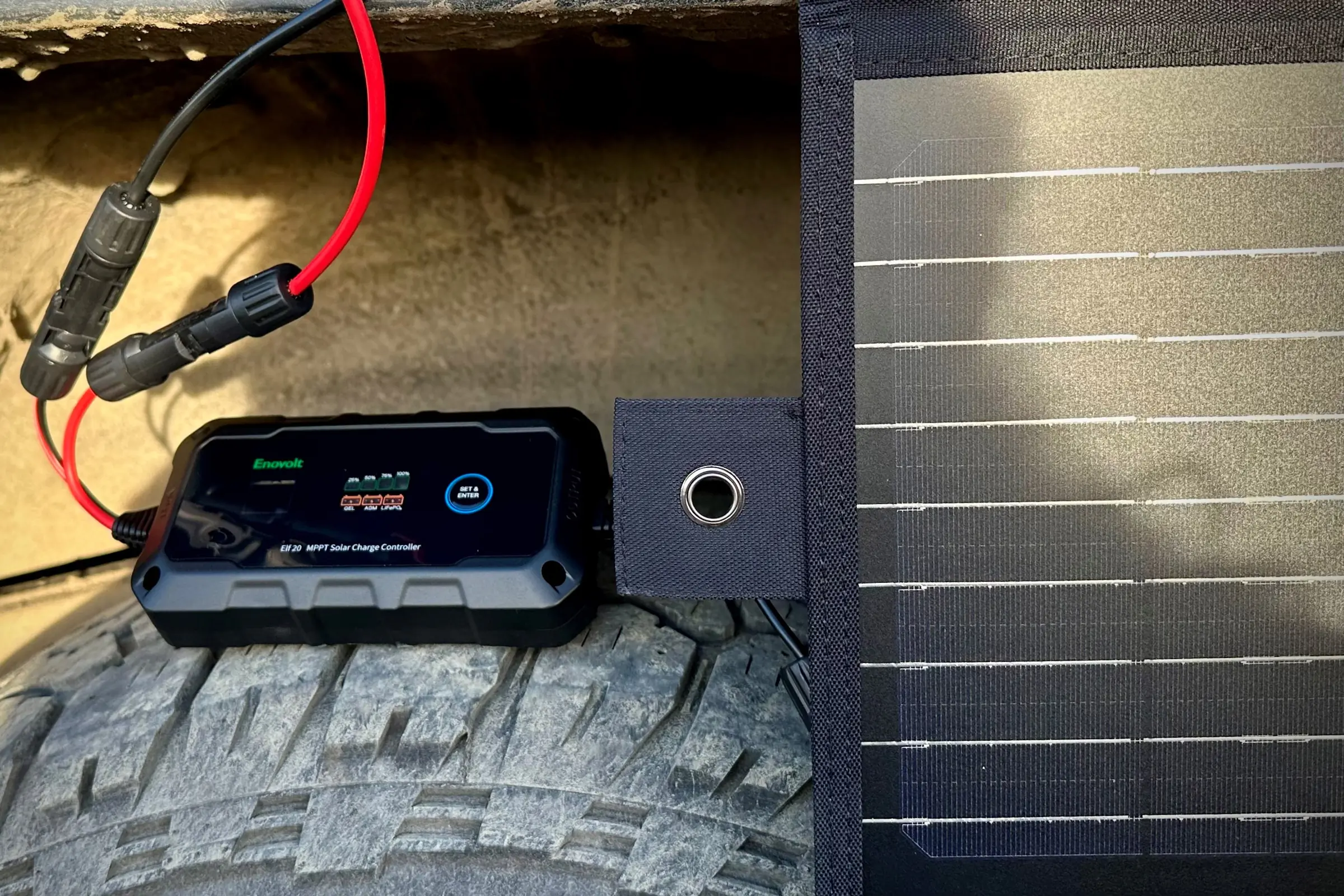
I won’t claim to be an expert in solar power. But in all of the solar applications I’ve ever worked with, there’s been a charge controller involved in the setup.
The charge controller keeps batteries from overcharging. If you connect a solar panel directly to a battery, there’s nothing regulating the voltage and current. This lack of communication between the two devices is what can lead to overcharging. That can ruin a battery altogether, or, at minimum, shorten its lifespan.
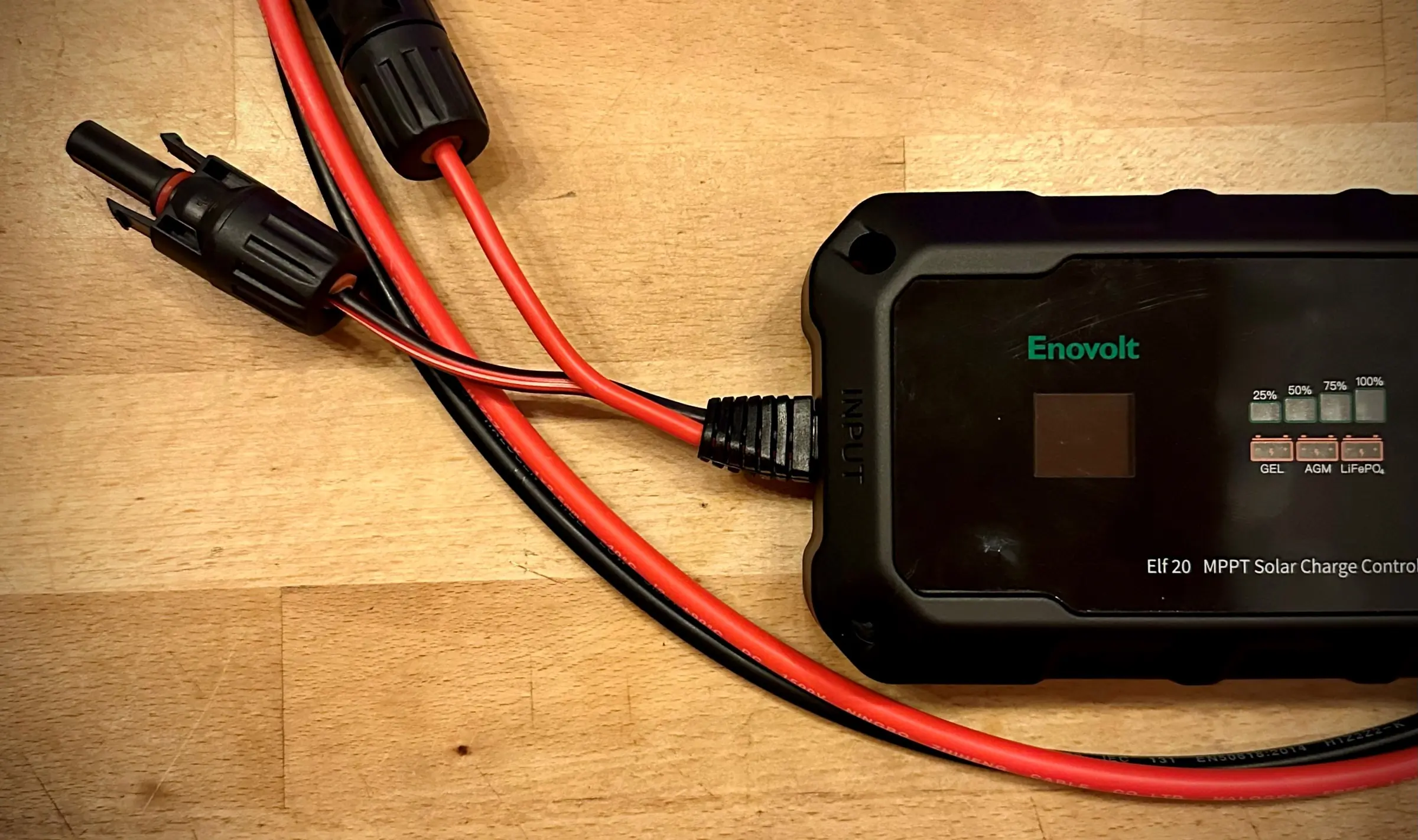



Dakota does offer its own solar charge controller. But I wanted something that was built for use and abuse in the elements. After doing some research, I picked up a portable, waterproof, and durable charge controller from Amazon.
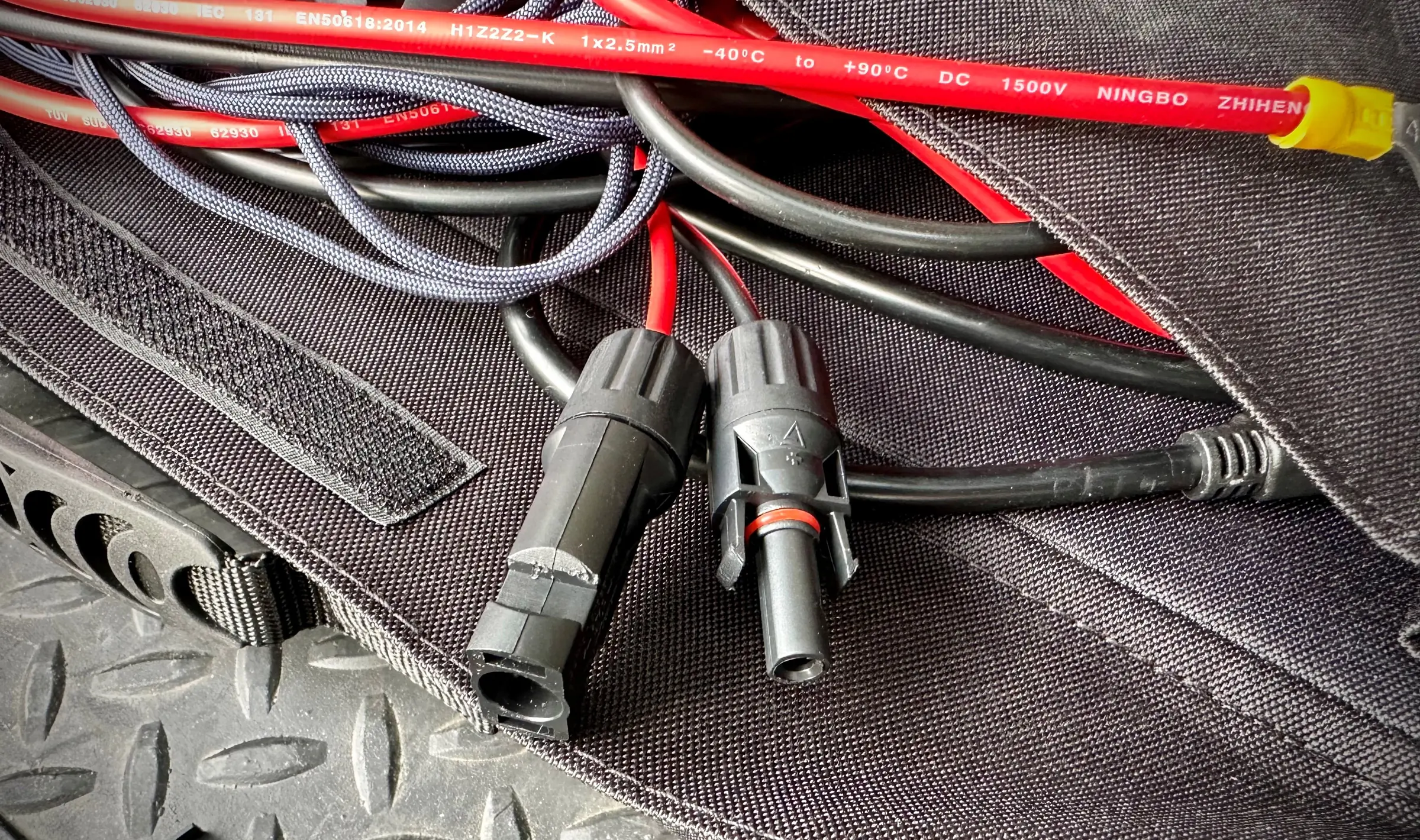



Geek talk: I ended up swapping out the SAE connectors on the controller I bought for MC4 connectors. This eliminates the need to use extra adaptors to get everything connected, which can impact performance. Compared to the SAE connectors, the MC4 connectors are more secure, and they have the added benefit of being waterproof.
Dakota Powerbox+ 60: First Impressions
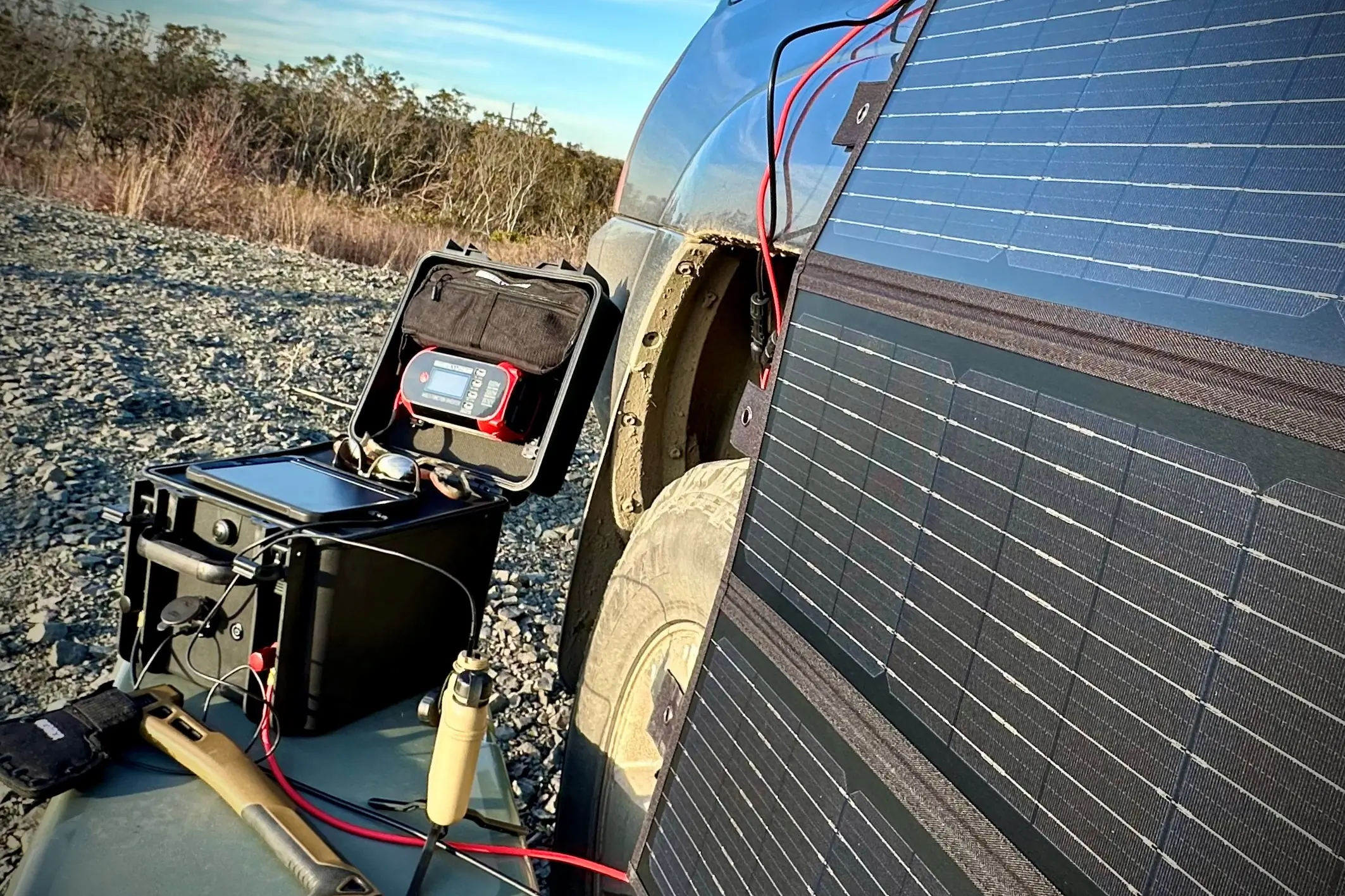



At a little over 12 inches in length, width, and height, the Powerbox+ 60 is smaller than I expected. I confirmed that it weighs 27 pounds. This isn’t something you’re going to throw in your backpack, but you might not mind hiking short distances with it. It has a convenient carry handle.
Opening the box, you get a little bit of a homegrown feel. But it’s not like someone built it in their garage. A specialized bracket holds the DC-to-AC inverter in place. A branded anti-static electronics tray proves this is the real deal.
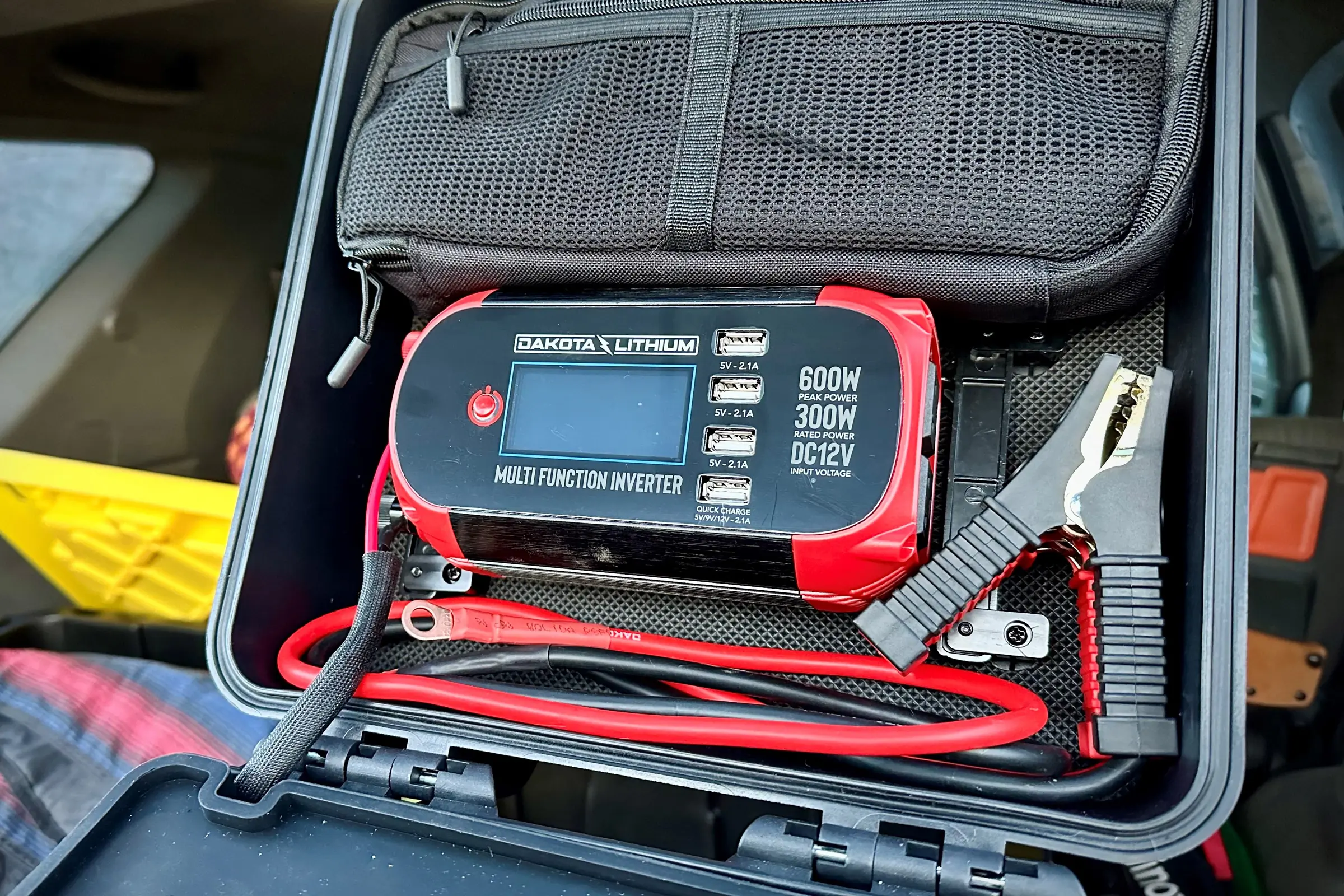



The battery fills most of the box. It nestles into the box on its front so the battery terminals can protrude for easy access. The lid contains the inverter, a cable pouch, and an empty spot where I store the jumper cables.
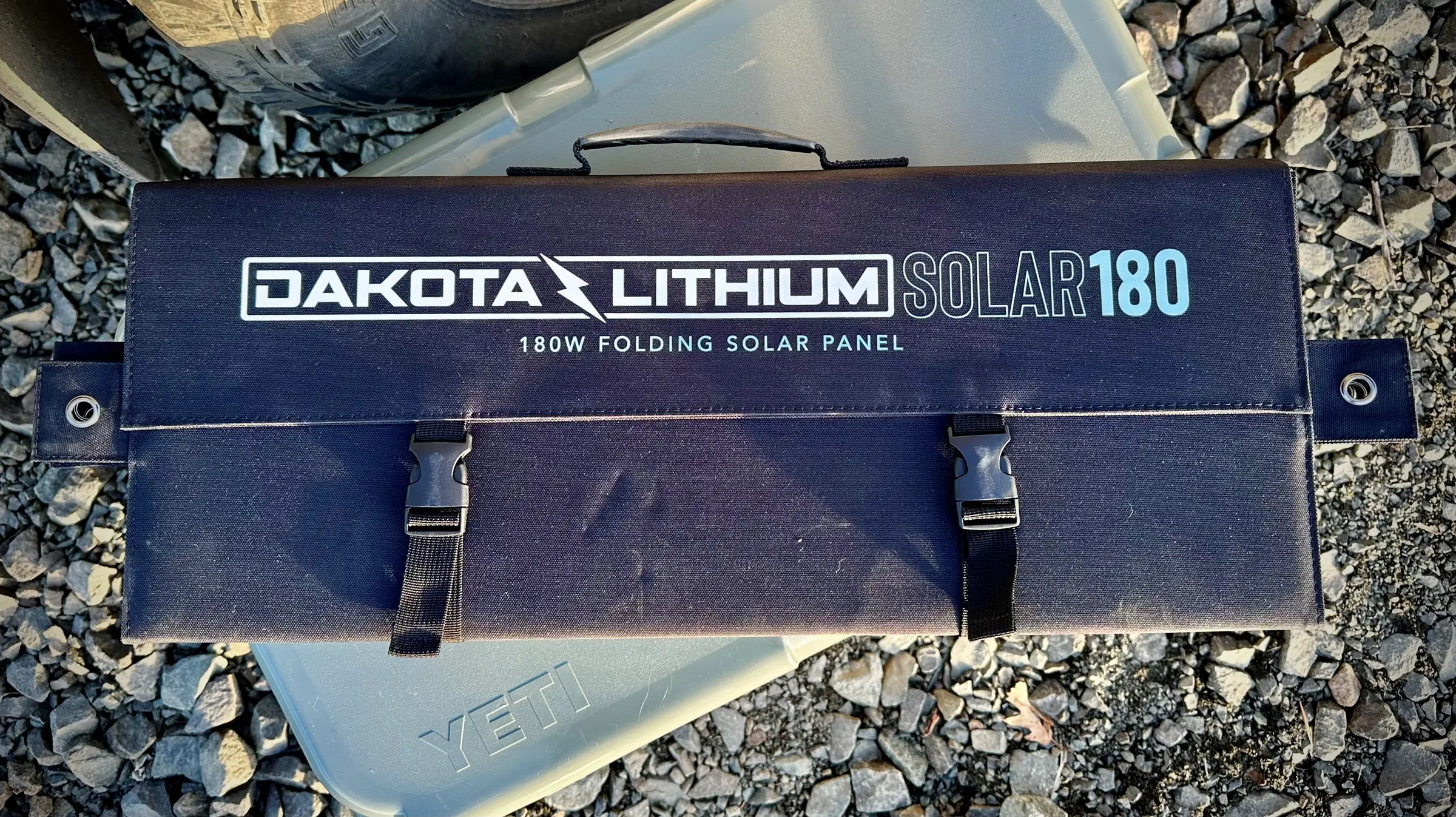



That panel is massive. Folded, you could strap it in your pack or leave it tucked in the back of your vehicle. Unfolded, the panel is over 6 feet tall. This makes it great for laying across the roof of your vehicle, hanging off an awning, or draping over the side of your tent.
Overall, both the powerstation box and the folding panels are high-quality and well thought out — right down to the amp gauge and extra USB outlets on the front of the box, as well as the massive storage pouch on the panel. I use that pocket to store the solar charge controller as well as the ring terminal adapter. This keeps everything together in their respective places.
Watt-Hours
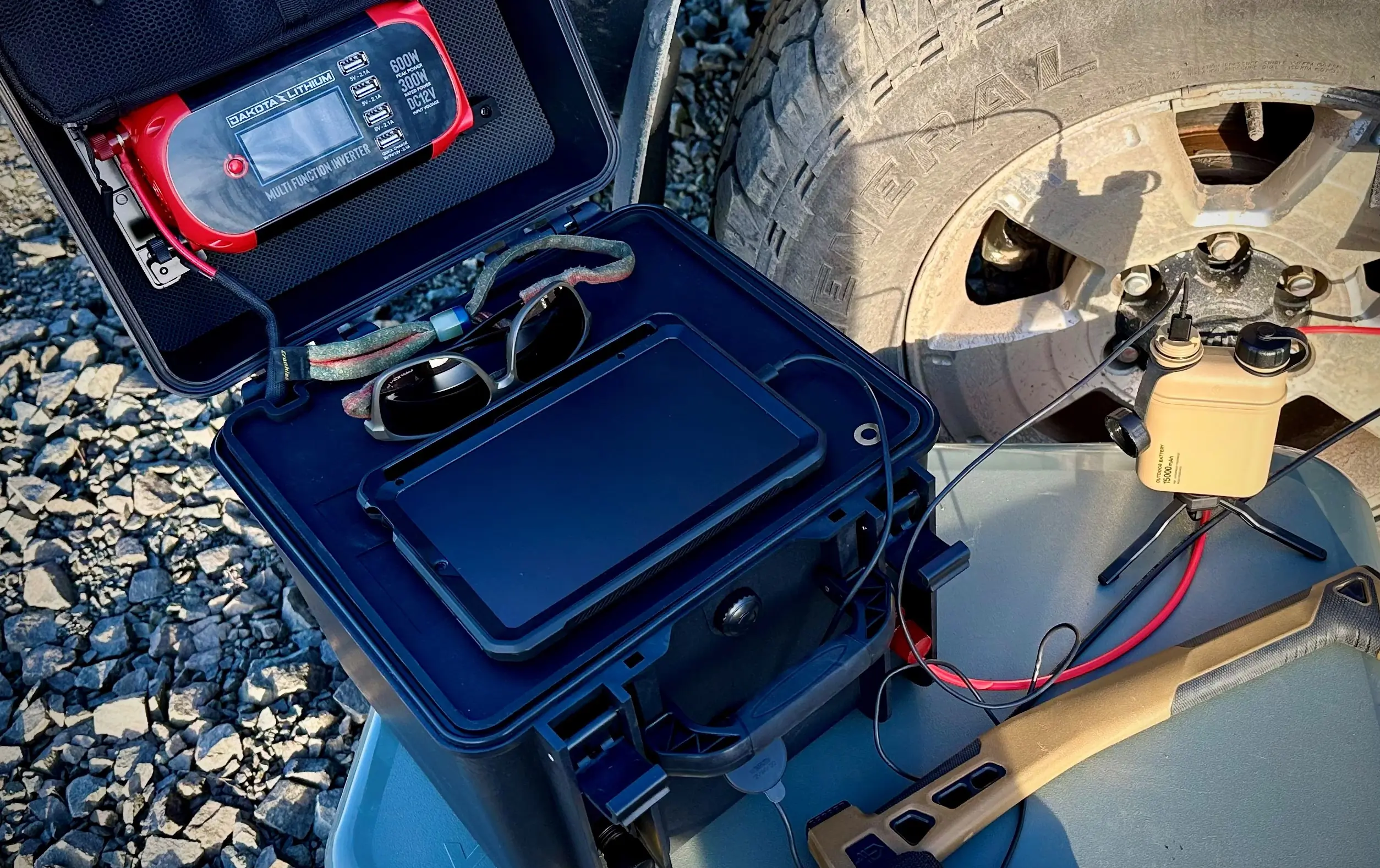



The world of portable power solutions goes off of watt-hours. A watt-hour (Wh) is how many hours you can use the battery based on the watts being used. In the case of the Powerbox+ 60, its battery is rated for 720 Wh. This means if you use something that draws 1 watt of power, the battery will last for 720 hours.
Most smartphones typically require 5W to charge. If it takes 1 hour to charge that phone, you’ll be able to charge that phone 144 times. But the Powerbox+ 60 isn’t just for smartphones. You could run something like the Dometic CFX3 45 portable electric cooler for 3 to 5 days.
Compared to the Competition
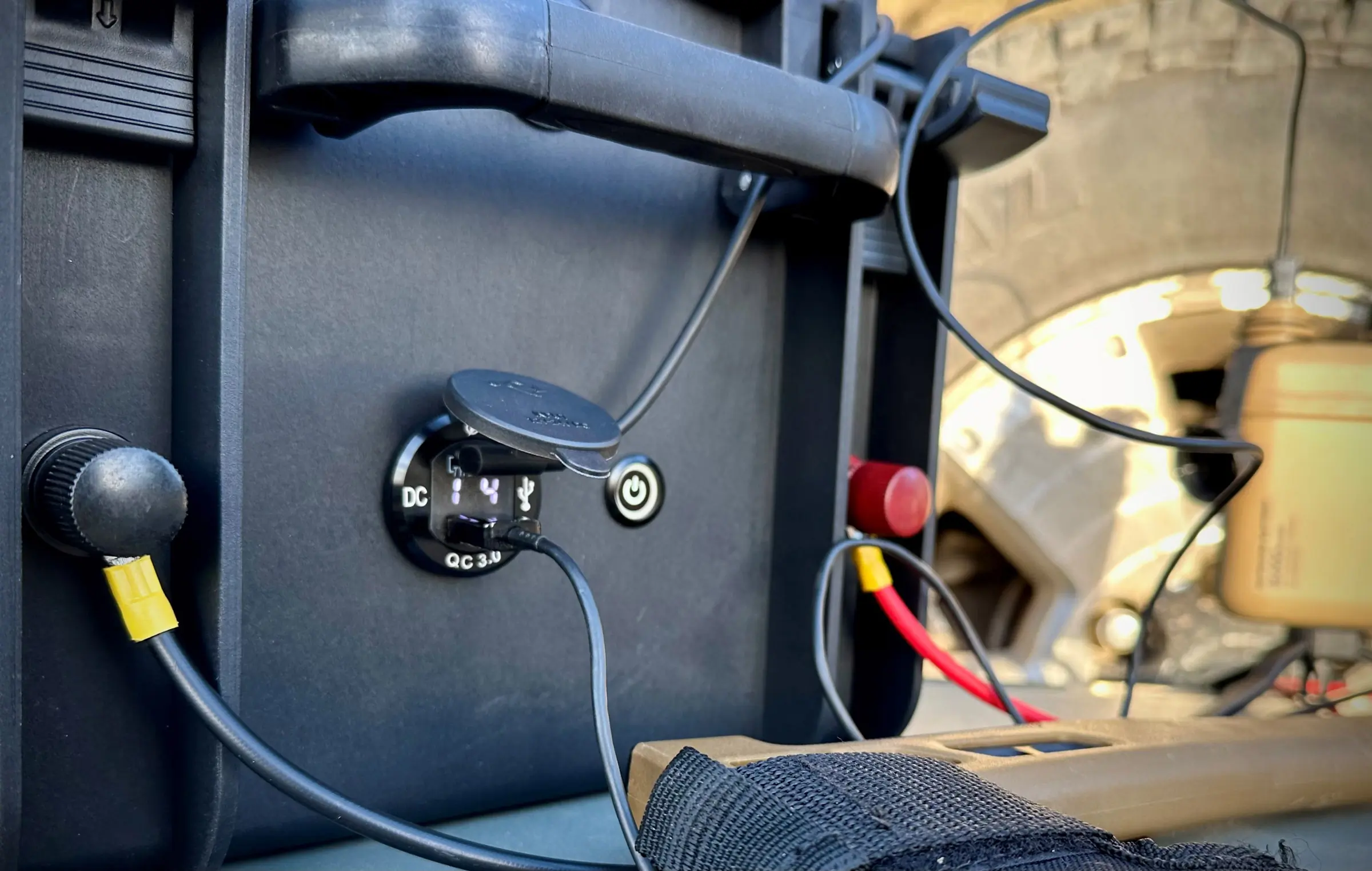



With brands like Goal Zero and Jackery heavily established in the outdoor product world, and somewhat more affordable, Dakota has work to do. Both Goal Zero and Jackery do a great job of wrapping batteries in a casing with built-in controls and outlets.
Where I can appreciate that — and have appreciated that on numerous campsites and outings — Dakota takes a more field-maintainable approach. You can easily replace all of the major components — battery, inverter, charger — if something goes sideways. That’s going to be a little more difficult with the other brands. In fact, from all of the models I have seen from Goal Zero and Jackery, only the battery seems replaceable.
On the other side are the myriad DIY solutions for overlanding rigs, vans, and RVs. These systems use the same bits and pieces that go into the Powerbox+ 60 in a homegrown fashion.
I think Dakota has found a nice middle-ground solution. The Powerbox 60+ is just as easy to use as any other power station, but it’s easier to maintain.
In my mind, the added benefit of it being maintainable and even upgradable without having to buy a whole new unit is worth the $1,500 investment. Additionally, the parts included are quality parts. The battery alone, which can also fit in your vehicle as your primary battery, is a standout in terms of battery innovation.
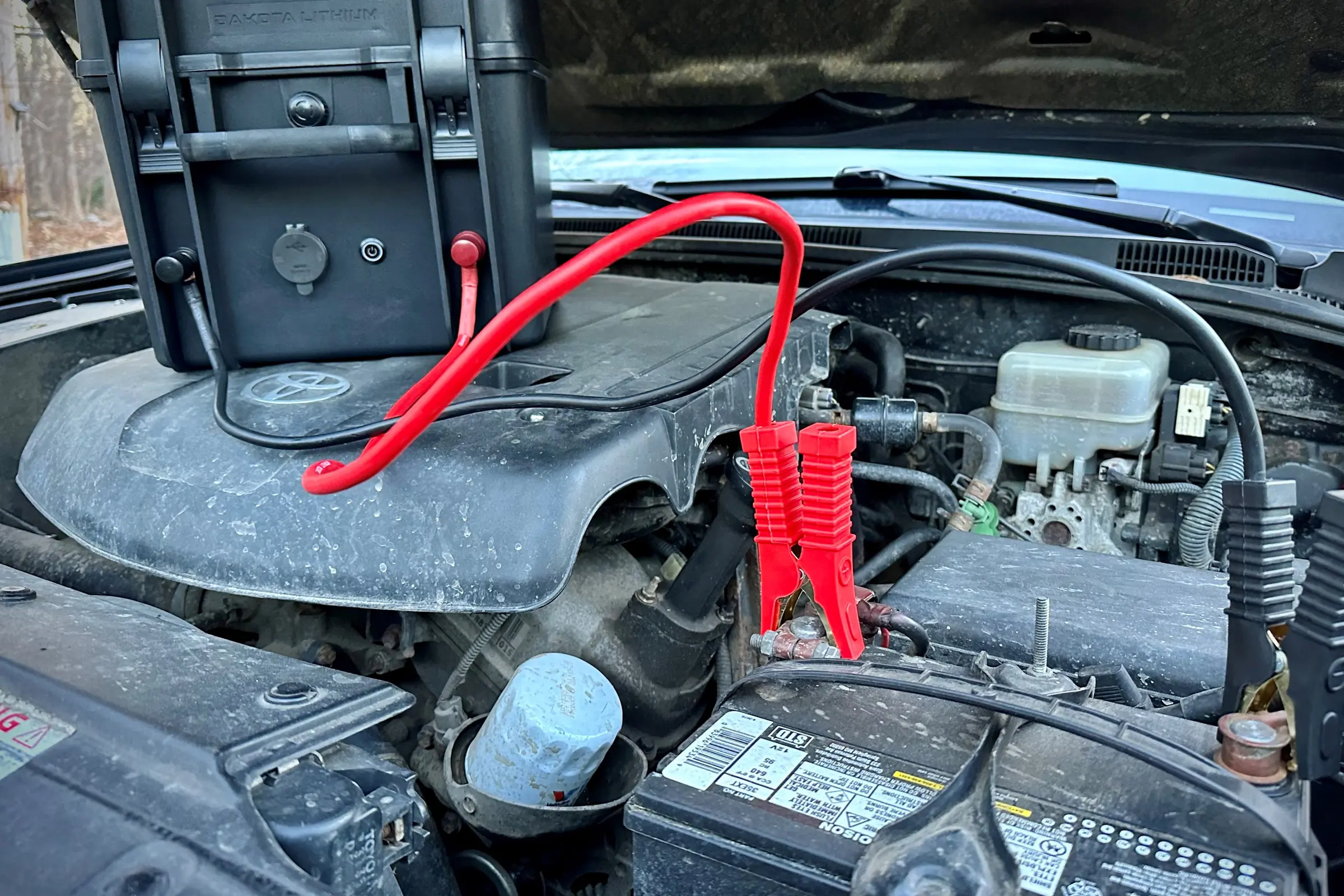



I will also add that though Goal Zero, Jackery, and numerous other brands do offer accessories designed to help you jump a dead battery — they’re add-ons that you need to buy separately.
I think including this option in the Powerbox+ 60 gives Dakota an edge. It also gives them more exposure. Something about exposed battery terminals isn’t just aimed at the outdoor crowd. It appeals to people from all walks of life.
Powerbox+ 60: Out in the Field
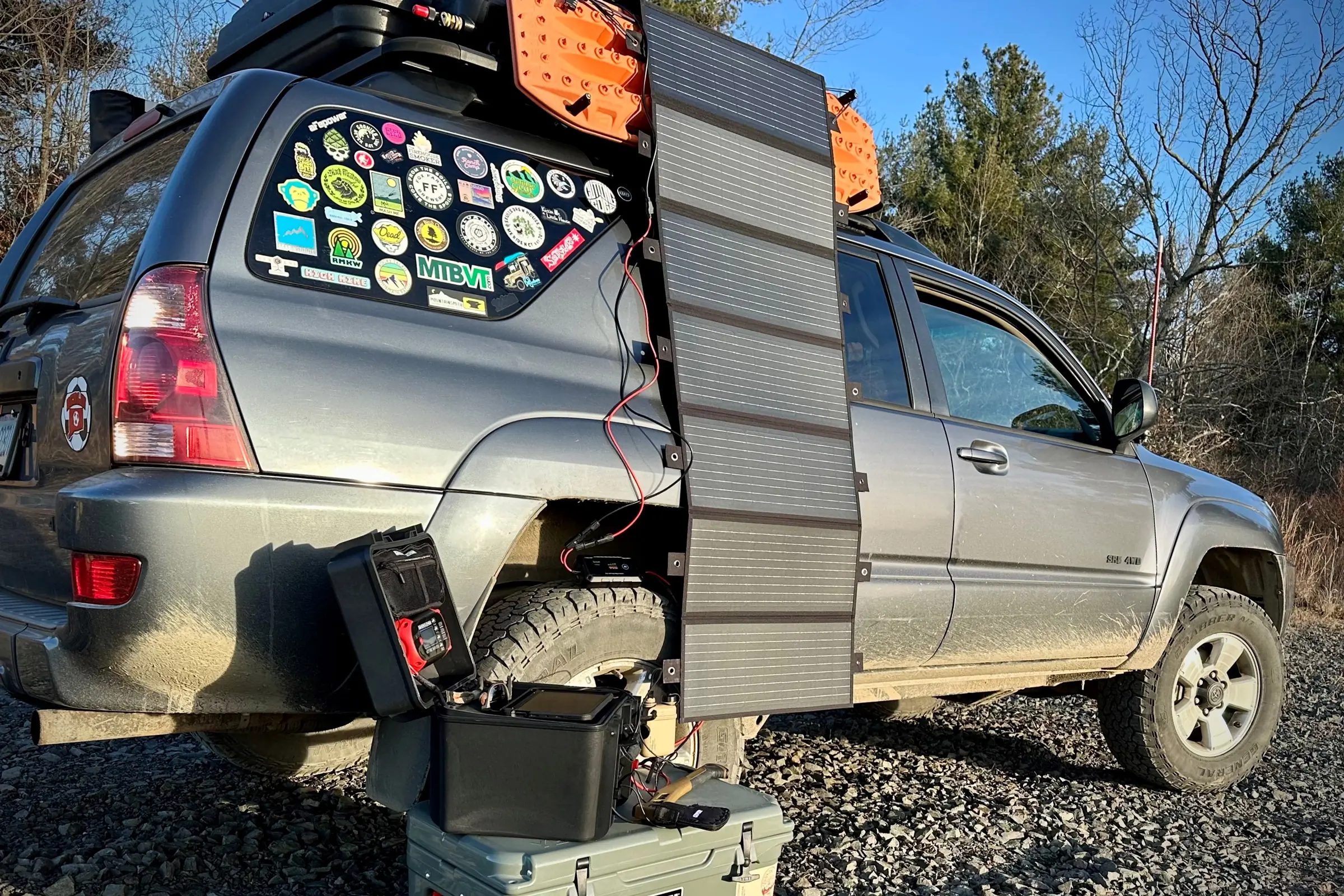



When I first opened everything up and read the included documentation, I charged the Powerbox+ 60 with the included 10A battery charger. It took about an hour to get it fully charged, as the battery was only half full.
The 12V 60Ah Dual Purpose 1,000 CCA battery is a subtype of lithium batteries known as LiFePO4 batteries. They’re the overall choice for applications like this because they’re safe, durable, have a long lifespan, and are efficient. This efficiency helps cut down on the charge time whether you use a battery charger or a solar panel.
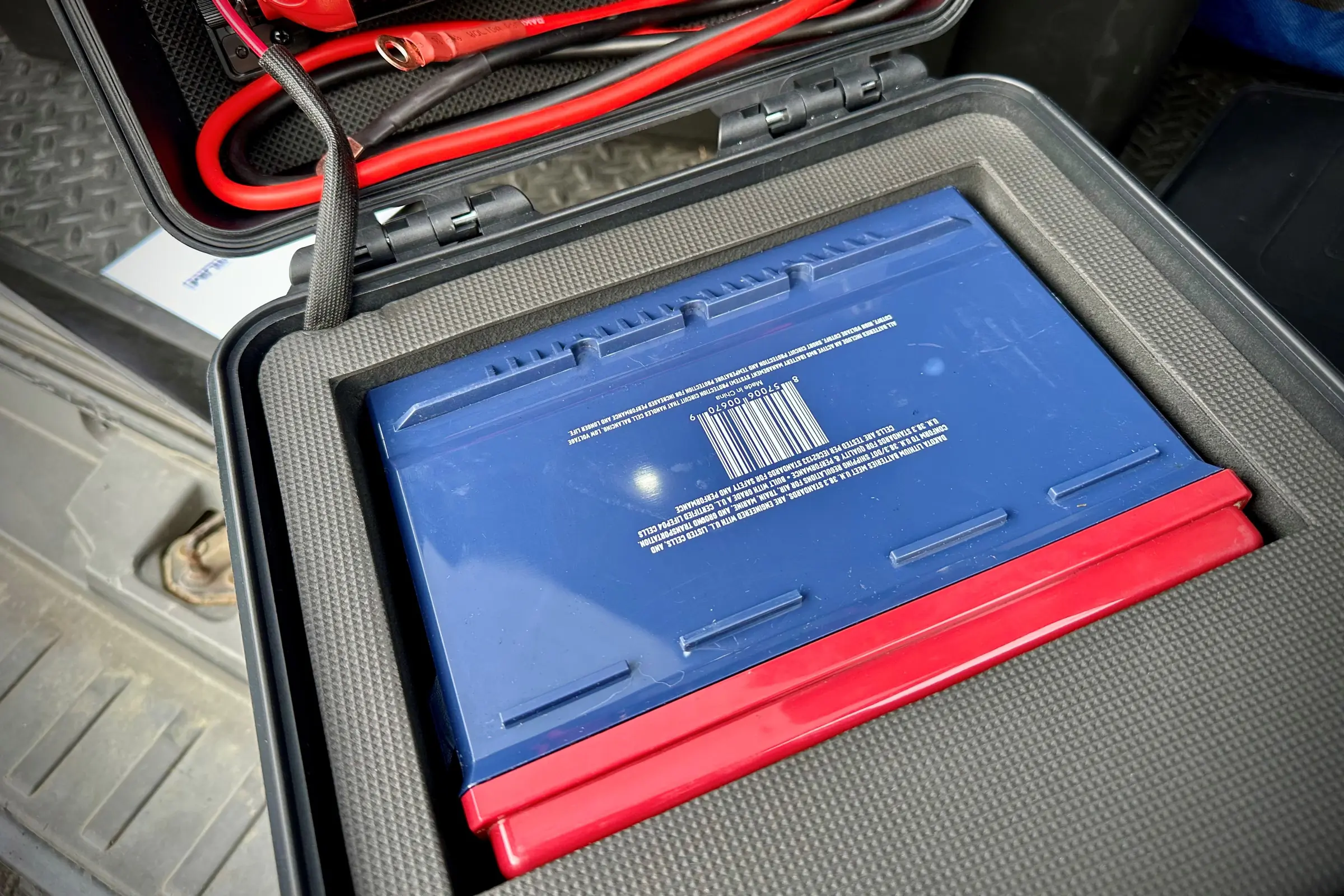



I’m one of the many people still using a cooler when I decide to escape society and live off-grid. Powering a portable refrigerator was never a concern of mine. I generally camp with my daughters and dog, so my main requirements are powering electronics, inflating air mattresses, and keeping things cool and comfortable during the summer.
It’s also nice to know that, on the off-chance the battery dies in my 4Runner, we won’t be stranded. As I said previously, if push came to shove — I could replace the battery in the truck with the battery in the Powerbox+ 60. That 12V 60Ah Dual Purpose 1,000 CCA Battery equates to a size 24 battery, which is what a 4Runner takes.
Power at Home
Where I will really push the limits of the Powerbox+ 60 is back home and at our cabin. At home, we lose power once or twice a month. That’s the trade-off when you decide to live outside of the city limits in the middle of the woods.
When that does happen, I simply plug in the fridge, the pellet stove, and numerous electronics including our modem and router. In this situation, the Powerbox+ 60 is a “nice to have”. However, at the cabin, it’s a necessity.
Up in Vermont, especially this time of year, it can get down to -20 degrees Fahrenheit at night. With temps that cold, a wood stove is only going to keep an uninsulated off-grid cabin so warm for so long. The Powerbox+ 60 allows us to use a portable heater, keep the lights on, keep our electronics charged, and keep our heads on straight. It eliminates the feeling of being stranded, even if you are for a few days.
I’m not going to try and turn this into a mental health PSA, but a major part of getting through tough and inconvenient times is staying positive. You can only play cards for so long in your long johns before you start to get a little cagey. Having the distraction of modern amenities goes a long way.
I will add that I am looking forward to running some string lights from the cabin out to the outhouse. Running them off of a timer will keep them up and illuminated throughout the night but save on watt-hours if one of us forgets to unplug them first thing in the morning.
Even with the ability to recharge the battery with the power of the sun, it’s important to get in the mindset of being conservative and conscious when you’re living off of something like the Powerbox+ 60, or any remote, off-the-grid, power supply.
Bridging the Gap
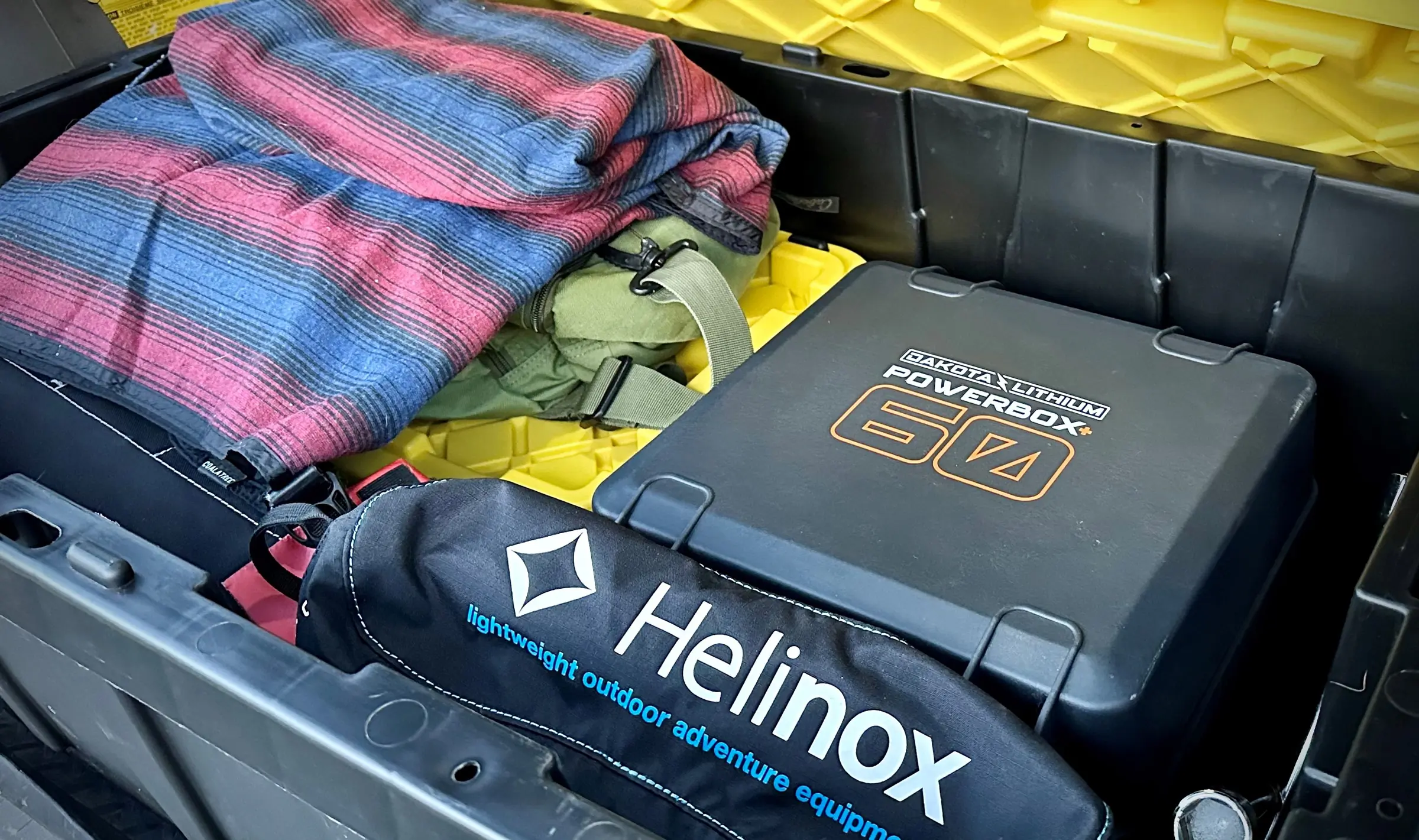



In the course of first researching portable power solutions and then testing, using, and relying on the Powerbox+ 60, there’s no denying that it’s just a few components shy of being the same setup that people living permanently off the grid use. And by that, I mean that all it would need is a couple more batteries, panels, and an upgraded inverter.
In fact, Dakota offers a handful of off-grid power systems that you can pick up all together or piece together. With its batteries optimized for solar, Dakota is finding its foothold within the off-the-grid community.
In contrast, brands like Goal Zero seem focused on backup power for homes on the grid and family camping trips. Maybe that’s the divide? For more than a decade, I have relied on Goal Zero products at home and camping with friends and family. I’ve always had good luck with them and they fit right in, in that setting.
A brand like Dakota Lithium, being that its products are easier to maintain and upgrade, feels like more of a universal solution. Even with only a couple of months of experience in using the Powerbox+ 60, I feel like they are very versatile and durable.
Dakota Lithium Powerbox+ 60 Powerstation: In Conclusion
With all of the portable power options available out there today, Dakota Lithium provides a line of reliable, field-maintainable products. That’s important because the last place you want the one piece of gear you rely on to power and recharge the rest of your gear to die is out in the middle of nowhere.
Further considering the 11-year warranty that covers the Powerbox+ 60, all of its components, and the 180W folding solar panel, I think Dakota Lithium has created a portable power solution for a multitude of settings and situations. It’s well worth its $1,500 price tag.
If you don’t live off the grid, overland travel, go RVing, or wake up in a tricked-out van every morning, $1,500 is a lot of money for peace of mind. There are other, more affordable, options out there for someone looking to power the essentials in the off chance that the power goes out. Dakota Lithium’s products are for the people who need to rely on them more often than not.
Overall, I am happy that Dakota Lithium reached out to me. I had seen its products here and there on Instagram, but I never considered using them or needing them.
As a tinkerer who loves reliable gadgets and gizmos, the Powerbox+ 60 wasn’t just an opportunity for me to “keep the lights on.” It also became an opportunity for me to learn more about how these systems work, how to repair them if they stop working, and how to expand their capabilities in the chance that I expand mine.
